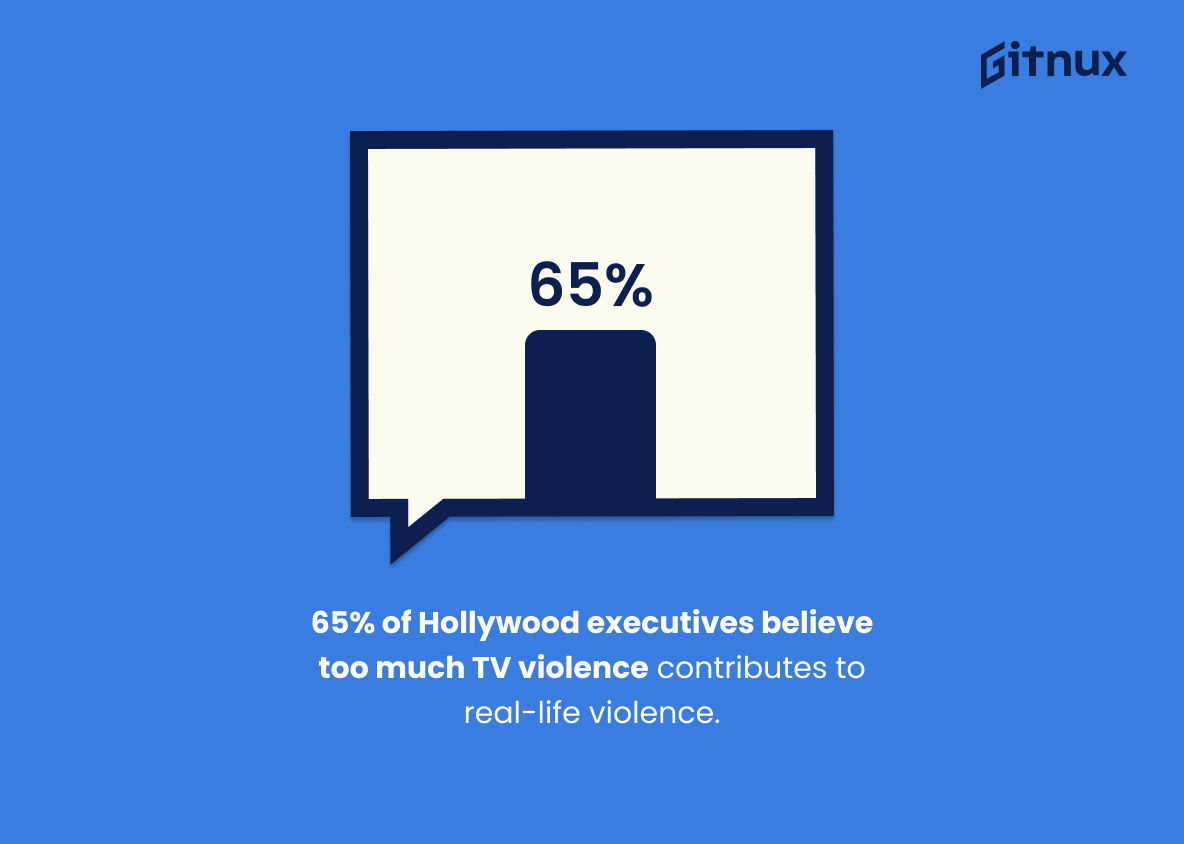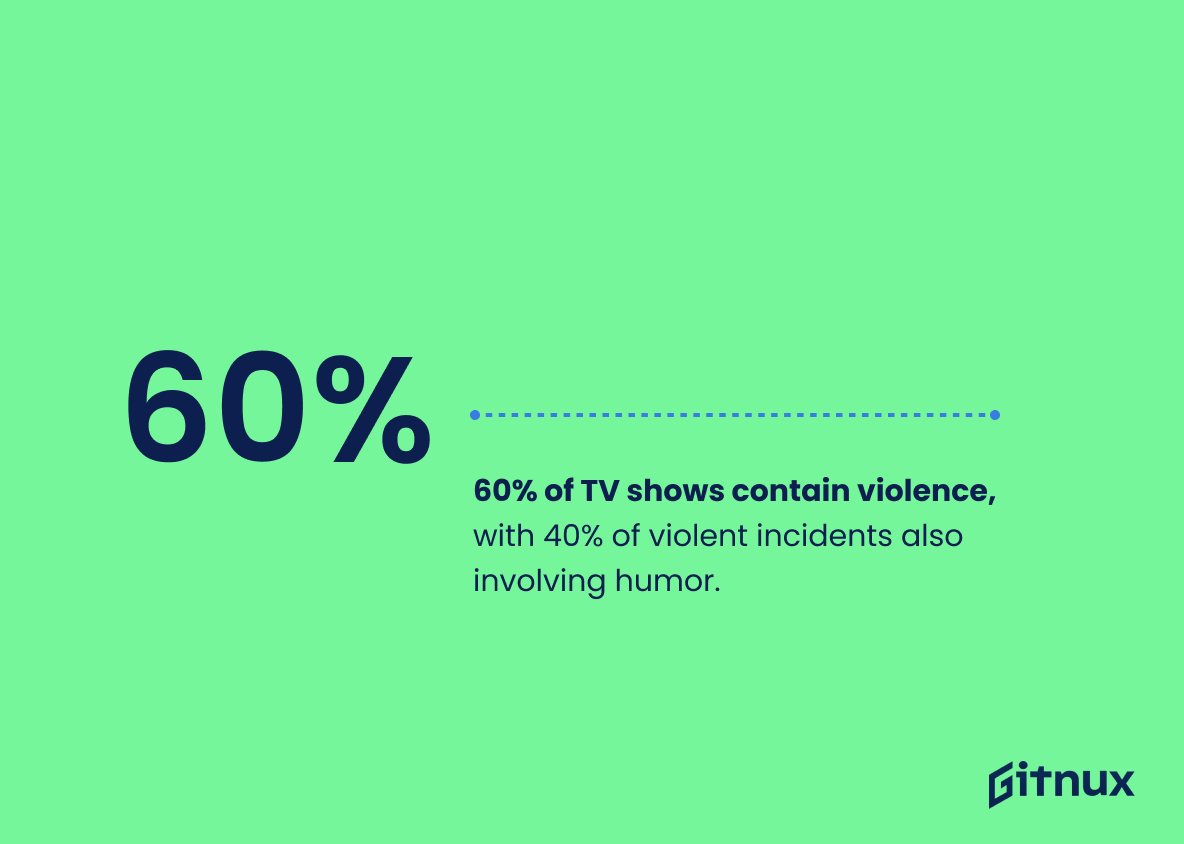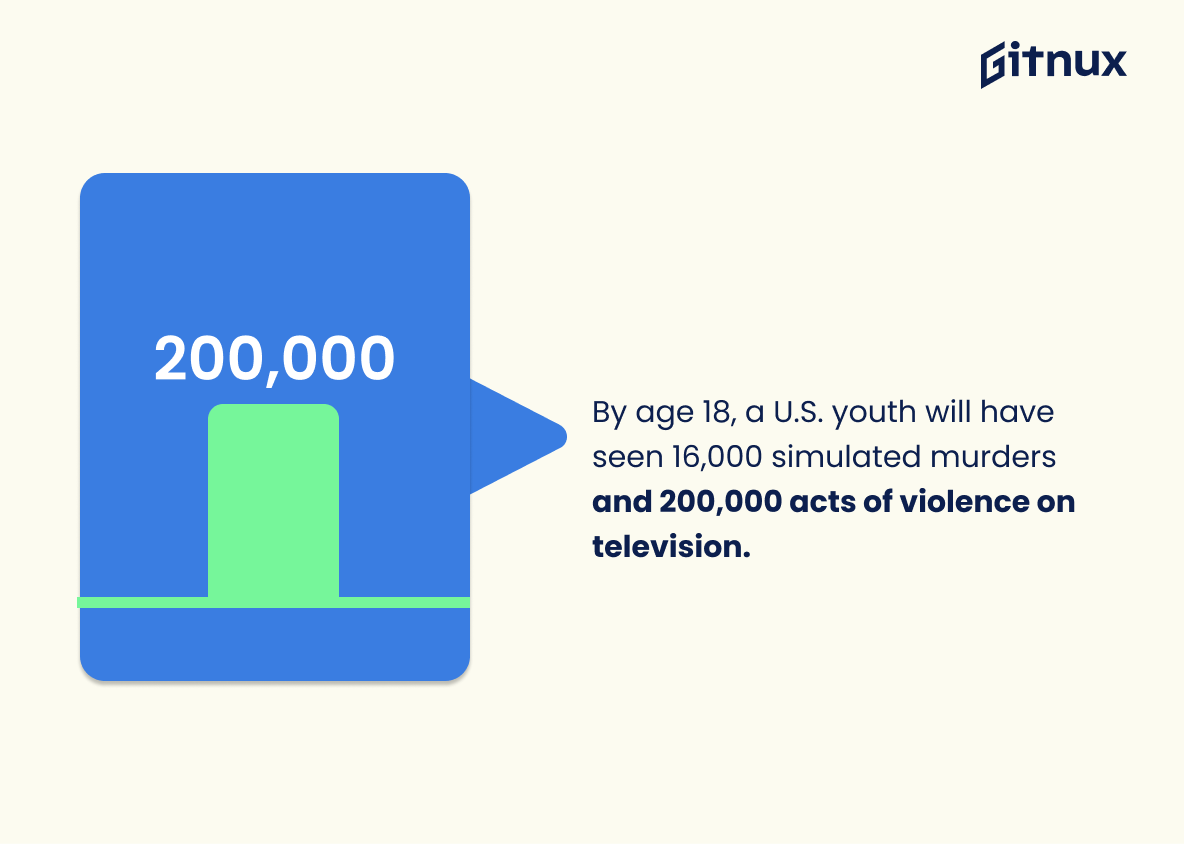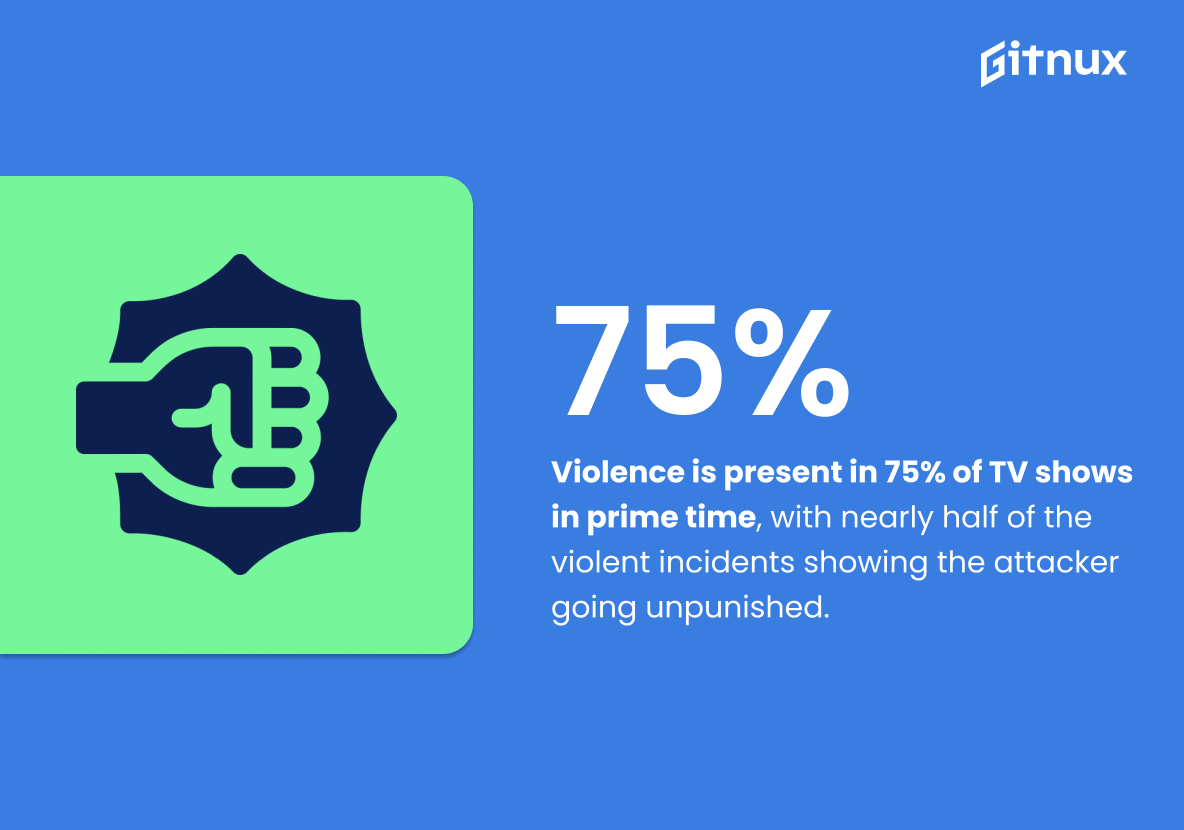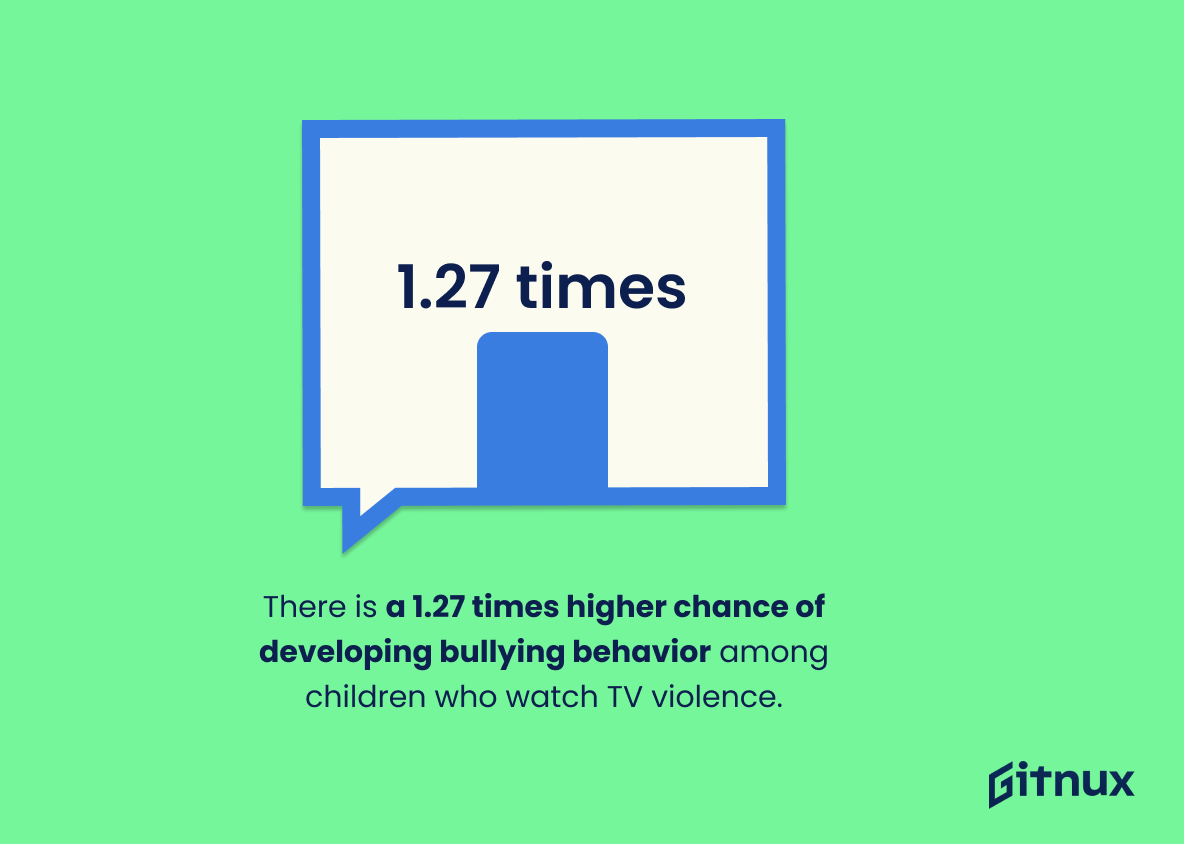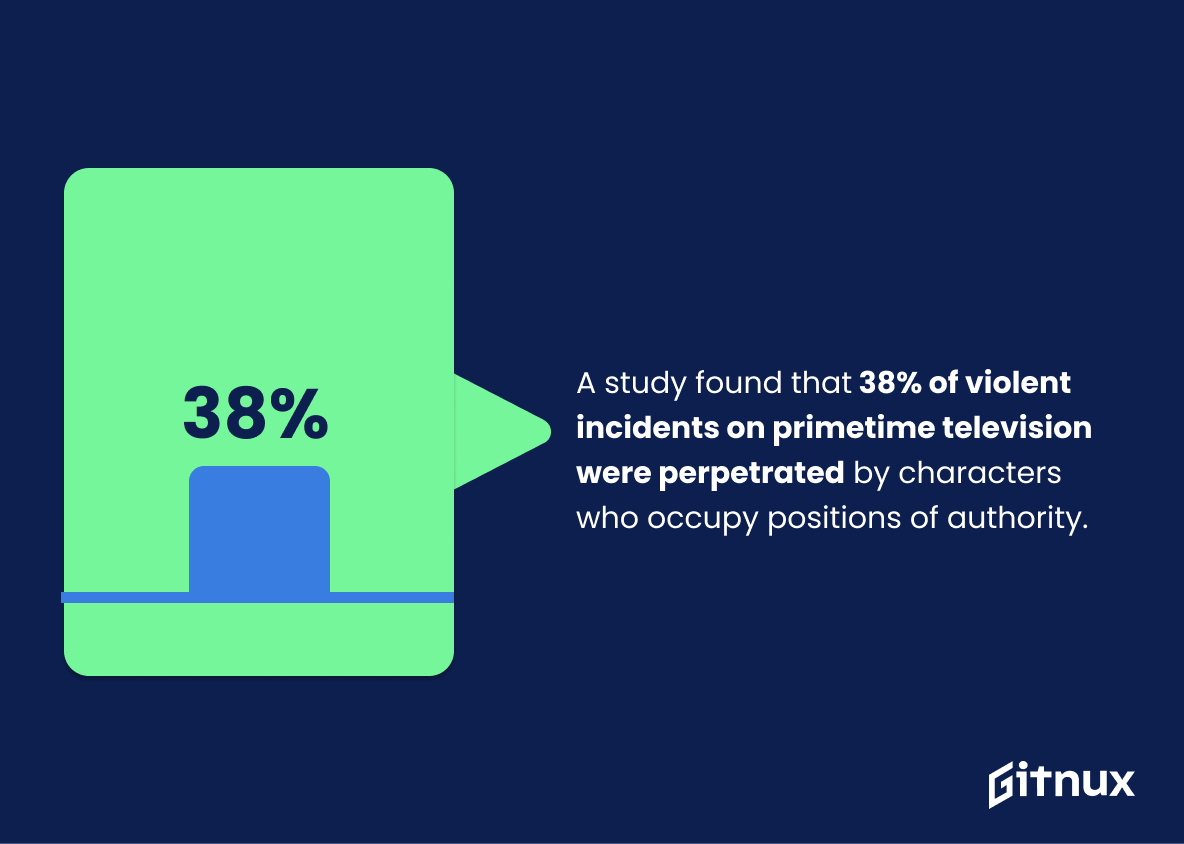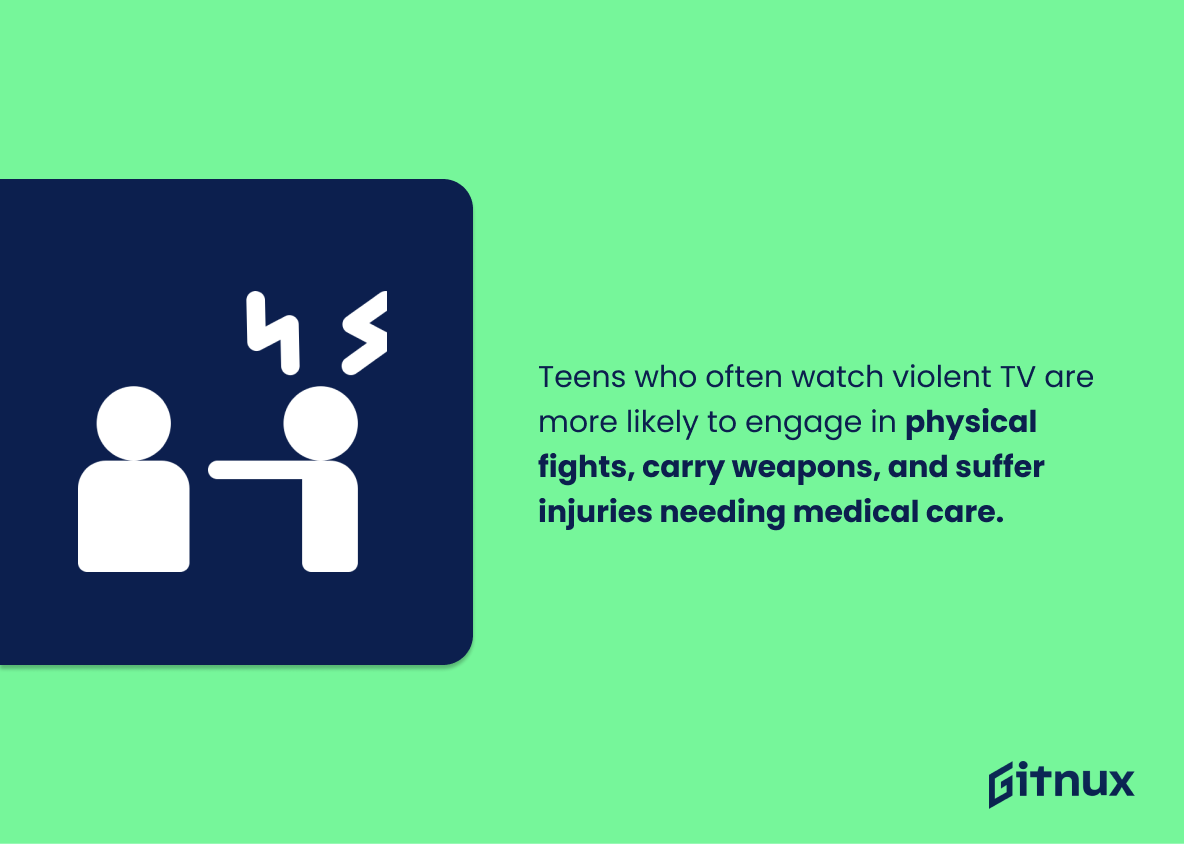The impact of television violence on children is a serious issue that has been studied for decades. Recent statistics show just how pervasive and damaging this type of media can be, with American children watching an average of 4 hours per day and seeing 8,000 to 16,000 murders by the time they finish elementary school. Studies have linked TV violence to increased aggressive behavior in kids as well as higher rates of bullying among adolescents who watch violent shows frequently. Furthermore, only 4% of violent programs emphasize anti-violence themes while 65% percent Hollywood executives believe too much TV violence contributes to real-life aggression. This blog post will explore these alarming statistics further and discuss their implications for parents and educators alike.
This statistic is a stark reminder of the impact that TV violence can have on children. It paints a vivid picture of the sheer amount of violence that children are exposed to at a young age, and the potential long-term effects that this could have on their mental and emotional development. It serves as a powerful reminder of the need to be mindful of the content that children are exposed to, and to take steps to ensure that they are not exposed to excessive violence.
66% of TV programs contain some violence, and 45% of shows containing violence show the perpetrator going unpunished.
This statistic is a stark reminder of the prevalence of violence in television programs and the lack of consequences for the perpetrators. It highlights the need for more responsible programming that does not glorify violence and instead shows the consequences of such actions. This is especially important for young viewers, who may be more likely to imitate what they see on television.
Tv Violence Statistics Overview
A typical American child will view over 200,000 acts of violence, including more than 16,000 murders before age 18.
This statistic is a stark reminder of the sheer amount of violence that children are exposed to through television. It is a sobering reminder of the potential long-term effects of such exposure, and the need to be mindful of the content that children are exposed to. It is a call to action for parents and guardians to be more aware of the media their children are consuming, and to take steps to ensure that it is age-appropriate and not overly violent.
65% of Hollywood executives believe too much TV violence contributes to real-life violence.
This statistic is a powerful indicator of the impact of TV violence on real-life violence. It shows that a majority of Hollywood executives, who are in a position to influence the content of television, recognize the potential for TV violence to contribute to real-life violence. This statistic is an important reminder that the media we consume can have a real impact on our lives and that we should be mindful of the messages we are sending to our viewers.
60% of TV shows contain violence, with 40% of violent incidents also involving humor.
This statistic is a stark reminder of the prevalence of violence in television shows, and the fact that it is often presented in a humorous context. It highlights the need for greater awareness of the potential impact of violent content on viewers, particularly young people, and the need for more responsible programming.
By age 18, a U.S. youth will have seen 16,000 simulated murders and 200,000 acts of violence on television.
This statistic is a stark reminder of the sheer amount of violence that young people in the United States are exposed to through television. It paints a vivid picture of the potential impact that this exposure can have on the development of their values and beliefs. It is a sobering reminder of the need to be mindful of the content that children are exposed to, and to take steps to ensure that they are not being exposed to excessive levels of violence.
A study showed a 41% increase in physical aggression in boys who watched high levels of television violence.
This statistic is a powerful indicator of the potential impact of television violence on children. It suggests that exposure to high levels of television violence can lead to an increase in physical aggression in boys, which could have serious implications for their development and behavior. This statistic is an important reminder of the need to be mindful of the content children are exposed to, and to take steps to ensure that they are not exposed to excessive levels of violence.
Violence is present in 75% of TV shows in prime time, with nearly half of the violent incidents showing the attacker going unpunished.
This statistic is a stark reminder of the prevalence of violence in prime time television, and the alarming lack of consequences for the perpetrators. It paints a picture of a culture that is desensitized to violence, and where it is seen as an acceptable form of behavior. This is a concerning trend that needs to be addressed, as it can have a negative impact on viewers, particularly young people, who may be influenced by what they see on television.
There is a 1.27 times higher chance of developing bullying behavior among children who watch TV violence.
This statistic is a stark reminder of the potential consequences of exposing children to TV violence. It highlights the fact that children who watch violent television are more likely to engage in bullying behavior, which can have serious implications for their social and emotional development. It is a reminder that parents should be mindful of the content their children are exposed to, and that it is important to monitor and limit the amount of violent television their children watch.
Adolescent violence exposure is linked to a 2-8% increase in aggressive behavior.
This statistic is a stark reminder of the potential consequences of exposing adolescents to violence on television. It highlights the fact that even a small increase in aggressive behavior can have a significant impact on the lives of young people. It is a reminder that parents and guardians should be mindful of the content their children are exposed to, as it can have a lasting effect on their behavior.
A study found that 38% of violent incidents on primetime television were perpetrated by characters who occupy positions of authority.
This statistic is significant in the context of TV violence statistics because it highlights the prevalence of violence being perpetrated by characters in positions of authority. This is an important factor to consider when discussing the impact of TV violence on viewers, as it suggests that viewers may be exposed to a disproportionate amount of violence from characters in positions of power. This could lead to viewers developing a skewed perception of authority figures and their behavior, which could have a lasting impact on their attitudes and beliefs.
In a study of 996 TV hours, the researchers found a total of 14,821 acts of violence, averaging around 15 acts of violence per hour.
This statistic is a stark reminder of the prevalence of violence in television programming. It demonstrates that, on average, viewers are exposed to 15 acts of violence per hour of television watched. This is a concerning figure, as it suggests that violence is a pervasive element of television content. This statistic is an important piece of evidence in the discussion of the effects of television violence on viewers, and it serves to highlight the need for further research into the issue.
Adolescents who frequently view violent television shows are at greater risk of being involved in serious physical fights, carrying weapons, and sustaining injuries that require medical attention.
This statistic is a stark reminder of the potential consequences of viewing violent television shows. It highlights the fact that adolescents who watch such shows are more likely to engage in dangerous activities, such as physical fights, carrying weapons, and sustaining injuries that require medical attention. This is an important statistic to consider when discussing the effects of television violence on young people.
Conclusion
The statistics presented in this blog post demonstrate the prevalence of violence on television and its potential to influence aggressive behavior in children. On average, American children watch 4 hours of television per day, which exposes them to 8,000-16,000 murders and more than 100,000 acts of violence by the time they finish elementary school. Studies have shown that TV violence can lead to a 10% increase in aggressive behavior among children as well as an increased risk for physical fights and carrying weapons. Furthermore, only 4% of violent programs emphasize an anti-violence theme while 65% of Hollywood executives believe too much TV violence contributes to real-life aggression. It is clear from these statistics that there is cause for concern when it comes to exposing young people to media with high levels of violent content.
References
0. – https://www.nymag.com
1. – https://www.healthychildren.org
2. – https://www.karger.com
3. – https://www.researchgate.net
4. – https://www.vchri.ca
5. – https://www.apa.org
6. – https://www.ahrq.gov
7. – https://www.nytimes.com
8. – https://www.files.eric.ed.gov
9. – https://www.ncbi.nlm.nih.gov
10. – https://www.aacap.org

